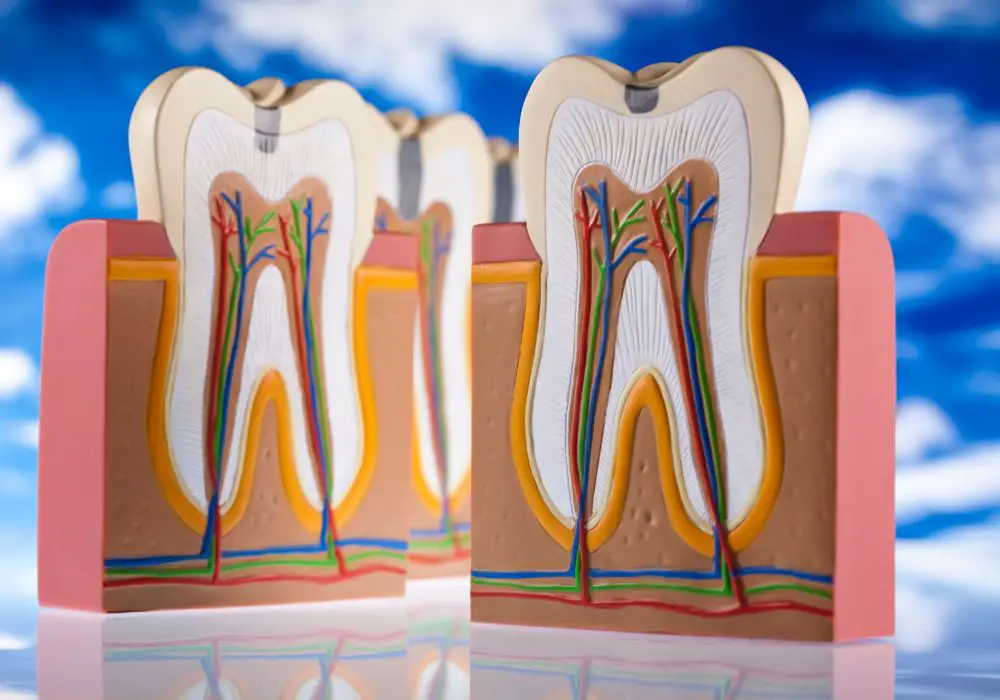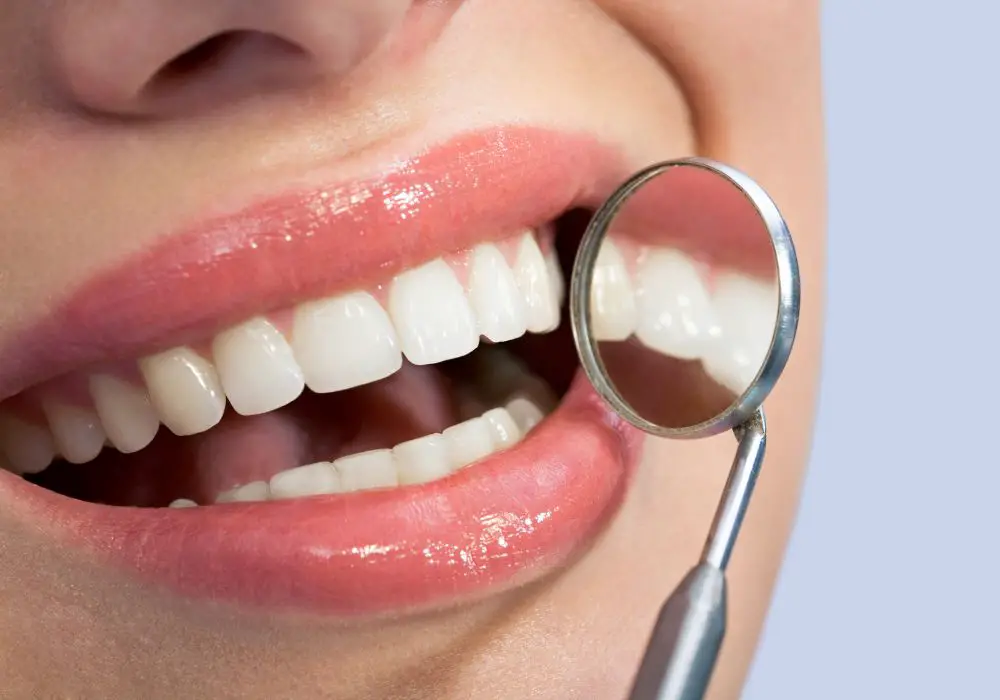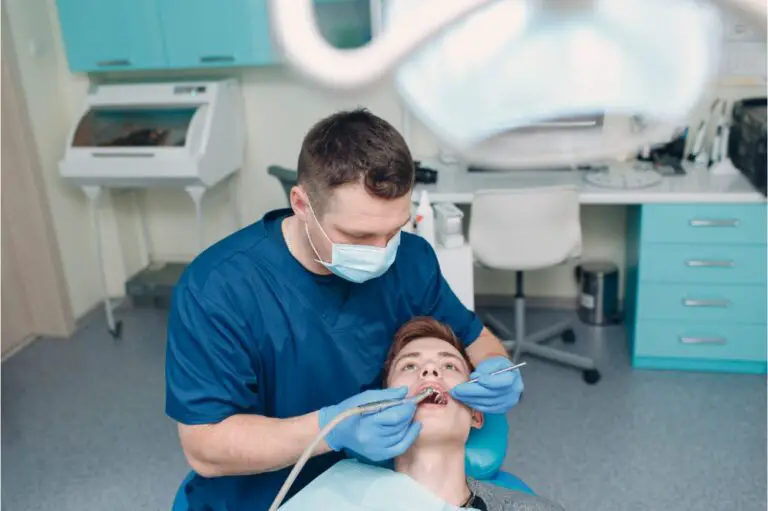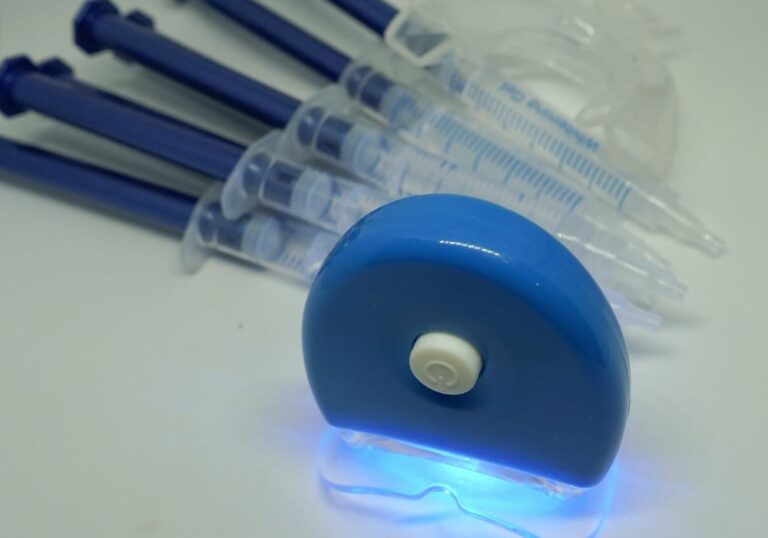Teeth allow us to bite, chew, and speak clearly through their rigid structure. But they are far from inert. Teeth contain nerves and blood vessels that provide critical sensations and regulation. We feel hot, cold, pressure, pain, and more through the innervation of our teeth. This can sometimes cause annoying sensitivity, especially when protective enamel erodes. Yet without sensation, our teeth would be prone to severe threats and damage.
Detailed tooth anatomy

Teeth are complex living structures with distinct layers and compartments. Here is a more in-depth look at the anatomy relevant to sensation:
Enamel
The visible crown of a tooth is coated with enamel, the hardest substance produced in the human body. Enamel is composed mainly of hydroxyapatite, a mineral form of calcium phosphate. It lacks nerves and blood vessels. Enamel protects the underlying dentin and pulp against fracture and infection. Its hardness comes from densely packed hydroxyapatite crystals that resist demineralization from acids.
Enamel wears down slightly but does not regenerate once fully formed. When enamel erodes from aging, acids, or physical abrasion, it exposes the dentin and increases sensitivity. Enamel is also susceptible to cracks that allow external stimuli to reach the pulp.
Dentin
Under the enamel lies a thick, bonelike layer of dentin. It contains 20% organic material, mainly collagen protein, and 70% inorganic mineral salts. Dentin provides structure, absorbs shock, and wards off fracture. It has a yellowish hue that influences overall tooth color.
The key structure in dentin are tiny fluid-filled tubules. Each tubule is only 2 microns in diameter, but densely packed – around 30,000tubules occupy a square millimeter. The tubules radiate outward from the pulp chamber to the enamel and cementum.
Crucially, the tubules house long processes extending from sensory nerves in the pulp. These odontoblasts are stimulated by thermal changes, pressure, pain, and other stimuli. Odontoblasts communicate with nerve fibers in the pulp through a synaptic junction. This allows sensations in the dentin to transmit to the trigeminal nerve.
Pulp
At the center of a tooth lies the pulp chamber, containing soft connective tissue called the dental pulp. It extends down through root canals via narrow apical openings. The pulp is highly vascularized and innervated with an extensive network of blood vessels, lymph vessels, and nerves.
- Nerves – Pulp nerves are sensory branches of the trigeminal nerve. The cell bodies reside in the trigeminal ganglion. Axons enter the root canal and synapse with processes from odontoblasts. This provides sensations of pain, temperature, pressure, and vibration. Interestingly, the pulp lacks proprioceptive nerves – it cannot sense tooth position or movement.
- Blood vessels – Arteries and veins enter via the root canal to supply the dental pulp with nourishment. Capillaries profuse throughout the pulp, exchanging gases and waste. The pulp requires ample blood flow due to its high metabolic rate and lack of collateral circulation. Nerves closely regulate pulp blood vessels.
- Defense cells – The pulp contains macrophage, lymphocytes, and other immune cells. These defend against bacteria and viruses trying to infiltrate from caries or cracks. Nerves help mediate neuroinflammatory responses by immune cells when dental injury occurs.
Periodontium
The periodontium refers to tissues that surround and support the teeth, including cementum, ligaments, gums, and alveolar bone. These provide anchoring, nutrition, and protection. A key role is sensing pressure and tension from chewing and biting.
- Cementum – This bonelike covering coats the tooth root and provides attachment for collagen fibers. Cementum lacks nerves.
- PDL – The periodontal ligament (PDL) connects cementum to the alveolar bone around the tooth socket. The PDL contains sensory nerves that detect compression and tension from chewing forces. This input helps regulate bite strength.
- Alveolar bone – The jawbone surrounding the tooth sockets provides structural support. It also contains nerves that connect with dental nerves.
Why teeth need sensation

Teeth face constant bombardment from temperature extremes, acids, microbes, and physical trauma. Their sensory innervation provides critical protective capabilities:
- Detecting threats – Nerves sense infection, fracture, erosion, and other insults that threaten tooth integrity and health. Pain and sensitivity signals trouble so we seek treatment.
- Regulating blood flow – Nerves promote increased blood flow when more oxygen and nutrients are needed. And nerves reduce blood flow when metabolic demands are low. This neural regulation maintains optimal vascular circulation in teeth.
- Mediating immune response – Trigeminal nerves interface with macrophages, lymphocytes, and other immune cells in dental tissues. This neuro-immune communication helps mobilize defenses against invading pathogens.
- Sensing bite force – Nerves in the PDL provide proprioceptive feedback about how much pressure is being applied to teeth during biting and chewing. This allows modulating bite strength.
- Controlling bacteria – Certain neuropeptides released by dental nerves have antimicrobial properties that fight periodontal bacteria. So nerves help control the oral microbiome.
Triggers of tooth sensitivity

While some sensation is normal, many people suffer from hypersensitive teeth that cause discomfort. Common triggers include:
Enamel loss
When enamel erodes due to aging, acid, abrasion, or other causes, it exposes the underlying dentin. This allows external stimuli to directly excite the dentin tubules that house sensory nerves. Even a slight loss of enamel can lead to thermal, tactile, or osmotic pain.
Gum recession
As gums recede, they expose sensitive root surfaces and cementum. These areas have less protection and are more easily stimulated by temperature, pressure, or chemicals. Gum recession is common from aging, periodontal disease, or aggressive brushing.
Dental cracks
Cracks allow external stimulants to penetrate deep into the tooth to the pulp nerve fibers. Vertical root fractures are especially problematic. Clenching, grinding, and trauma can cause cracks.
Dental procedures
Certain dental treatments like tooth whitening, orthodontics, scaling, and fillings can increase temporary sensitivity. This results from irritation of the dentin tubules. Sensitivity typically subsides within a few weeks as the tooth recovers.
Bruxism
Forceful tooth grinding or clenching places heavy compressive loads on teeth. This can squeeze the pulp and dentin, inducing sensitivity. It also leads to fractures over time. Stress and sleep disorders are common causes of bruxism.
Tooth abscess
A bacterial infection around the root pushes against the nerve, causing throbbing pain, especially when chewing. Abscesses require immediate treatment like root canal therapy to address the infection before it spreads.
Conclusion
Teeth employ intricate innervation and vascularization to protect their vitality and function. The ability to sense threats is essential for teeth to withstand constant bombardment. While sensitive teeth can be irritating, appreciate that your pearly whites have a sixth sense! Just be sure to take proper care of your teeth.
Frequently Asked Questions
Here are some common questions about tooth sensation:
Q: Which nerves innervate the teeth?
A: Teeth are innervated by the trigeminal nerve, specifically the mandibular and maxillary branches. The cell bodies of sensory trigeminal neurons reside in the trigeminal ganglion. These nerves detect pain, temperature, pressure, vibration and other sensations.
Q: Do teeth have taste buds?
A: No, taste buds are found on the tongue, soft palate, upper esophagus and epiglottis. They sense sweet, salty, sour, bitter, and umami flavors. Teeth do not contain taste buds. But nerves in teeth do sense the texture, temperature, and chemical irritation of foods.
Q: Can dental implants transmit sensation?
A: Dental implants are artificial teeth fused to the jawbone that lack innervation. However, newer implant designs allow some transmission of pressure and vibration sensations through the bone to surrounding nerves. But they do not sense temperature or pain.
Q: Why do some teeth become non-vital?
A: If the pulp tissue dies due to extensive decay, fracture, trauma or other causes, the tooth becomes non-vital. Without living nerves and blood vessels, it loses sensation and becomes prone to infection. Root canal therapy is required to clean out the dead pulp safely.
Q: Do baby teeth have nerves?
A: Yes, deciduous baby teeth are innervated by trigeminal nerves. Baby teeth start developing in utero before birth. Their sensation helps children learn to bite, chew and speak properly. The nerves and blood vessels recede as adult teeth push the baby teeth out.






